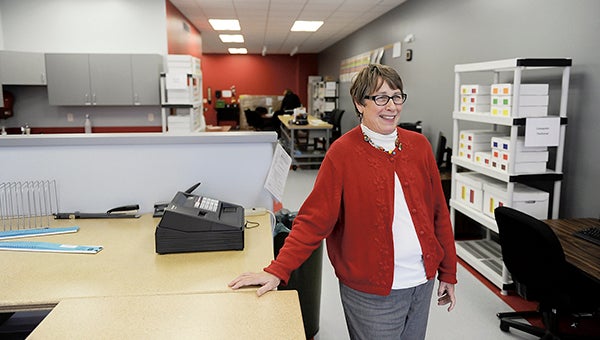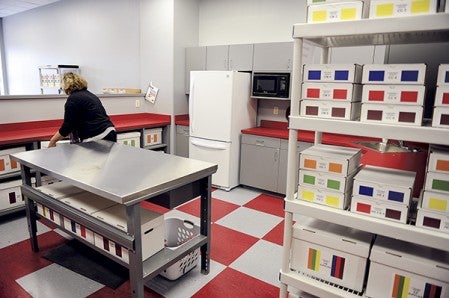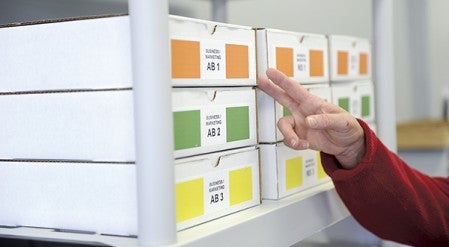From school to work: Austin schools open new career center for special needs students
Published 11:03 am Wednesday, October 16, 2013

Sara Gilberg talks about and shows off the Austin Area Career Education Center on Main Street Tuesday morning.
— Eric Johnson/photodesk@austindailyherald.com
Sara Gilberg paged through a laminated booklet of instructions, where she points out certain directions students can use to complete their tasks for the day. The booklet is there, she said, so students don’t have to ask teachers or paraprofessionals how to do something.
“They can be self-sufficient,” she said. “What we’re looking for here is independence.”
Independence is the goal at the Austin Area Career Education Center, a new work center for special needs students that Gilberg, a work-based learning coordinator, oversees. The work center is the latest Austin Public Schools initiative to help special needs high school students from all backgrounds transition from school life to the workplace.
The center is the culmination of almost two years of work by district special education officials, and the second of four phases designed to create more partnerships between Austin schools and area businesses.

The center has several different stations to teach students different skills to help them better enter the workplace.
“What we’re hoping to do is meet the needs of even more students,” said Sherri Willrodt, director of special education.
Gilberg was hired last year in part to oversee work program developments. Aside from her duties as a special ed teacher, she brought in activities and lessons for the district’s special needs students, and now she’s finding ways to maximize student learning at the work center.
About 30 Autism spectrum disorder, emotional behavior disorder and developmental cognitive delayed students attend classes each day to work in one of five areas: business and marketing, computer skills, consumer service (such as food preparation, sewing and janitorial duties), assembly/production and basic construction. All told, students practice about 244 tasks in anticipation of the working world.
“When students go out onto a job, they’re going to need to be independent,” Gilberg said. “It doesn’t just happen automatically. They need to learn how to do that.”
For some instructors, that means fewer lessons to show students how things are done. Instead, instructors act as the employer by getting students to figure out answers on their own. Last year, paraprofessional Alyssa Wagner felt she was guiding students to figure out the answer more, whereas with the work center, the focus is on student self-sufficiency.
“It is a totally different mindset.” Wagner said. “We really try to step back and give them the opportunity to request help before offering help.”

At each station are different levels of work, color-coded and progressing from easy to hard. Each student must master each level before progressing to the next.
Students at the work center are already producing goods to be sold at the high school, such as cards and gift tags, and Gilberg envisions projects like teddy bears and tie-blankets to be sold at high school athletic events.
In addition, Gilberg is beginning work on creating stronger ties with Austin’s business community. Gilberg hopes to find willing businesses to mentor students in volunteer work programs, and eventually Austin Public Schools hopes to create a work placement program where students can work during the day with a work trainer at area businesses.
District officials are planning an open house in early November. Thus far, it appears students and community members are excited about the new possibilities.
“I’ve heard really positive reactions from the students,” Willrodt said. “I think they’re motivated to be there and learn the new skills.”





